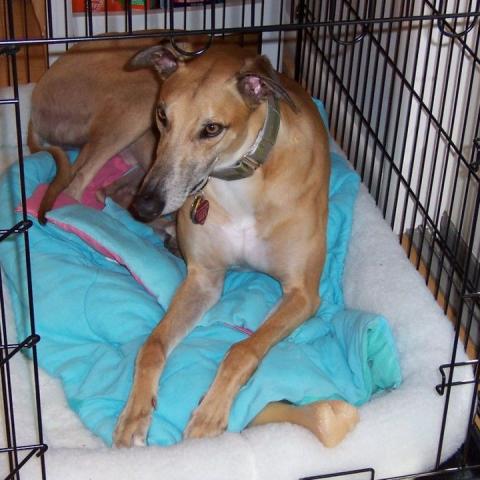Crate Training
Why Crate Train?
- Crate training is a humane and safe method of confinement that is recommended by shelters, veterinarians, rescue groups, trainers and breeders.
- Using a crate allows your dog to be successful by limiting his opportunities to make mistakes.
- Dogs are den animals, so a crate will make a dog feel safe and secure by giving him a specific place to sleep, eat, and be a part of the family.
- Using a crate helps make housetraining easier and faster.
- Crate training allows your dog to be safely inside when you are not home and will prevent unwanted outdoor behaviors such as barking, digging, and escaping the yard.
When you Should not Use a Crate
- A crate does not replace the need for training and appropriate exercise.
- As a means of punishment.
- A young dog may not be able to be crated for more than 2-4 hours, depending on age. A bit of creativity may be necessary. Coming home for lunch, arranging to have a neighbor let the puppy out, putting a litterbox in the back of a crate, or surrounding the crate with a barrier and putting down specially treated housetraining pads may be required until the puppy is old enough to have more control.
- If your dog shows signs of separation anxiety such as frantic or hysterical behavior immediately prior to your leaving and upon your return, coupled with self-mutilation and/or destructive behavior, do not confine the dog to a crate. Do consult a qualified professional as soon as possible.

By Chaoticfluffy - Own work, CC BY-SA 3.0, https://commons.wikimedia.org/w/index.php?curid=11549612
Crate Size
Housetraining is based on the premise that dogs will not relieve themselves in the same area where they eat and sleep, so a crate that is too big will hinder your efforts.
Taking Your New Dog Home
Ignore any barking, whining, or crying, and do not reward your dog for fussing by looking at, touching, or talking to him. Later, when you know he’s trained to sit quietly in his spot, he can ride loose in the car if you choose.
You're Home, What's Next?
Next, introduce him on-leash to the house. Let him thoroughly explore all the rooms that will not be off-limits, sniffing and walking anywhere he wants. Your job is to watch him closely.
If he starts to relieve, interrupt him by giving him a slight pop on the leash and saying “no.” Then quickly take him outside to his relieving area, praising him when he goes.
Then resume your tour of the house. If he starts to get into or pick up a forbidden object, again interrupt him by giving him a slight pop on the leash and saying “leave it.” When he ignores the item, praise him.
If you haven’t already, now is a good time to look around and see what needs to be put up or away. For example, it is not fair to expect your dog to ignore the smell of food items in an accessible trashcan. Nor is it fair to expect a puppy to ignore clothing, shoes, or toys on the floor. These items need to be put away.
Introducing the Crate at Home
Now comes the fun part: teaching your dog to go into his crate on command. Use small treats, pieces of string cheese, chewy dog treats, or whatever your dog likes to get him to go willingly into his crate with the door left open. If the dog is fearful or uncertain, start by putting the treats on the floor in front of the crate, then just inside, and when he’s comfortable, all the way in back.
Now add your command such as “kennel up” just prior to placing the treat in the crate. Do this several times throughout the day until your dog is confident and comfortable with the crate. At this point, the door should remain open.